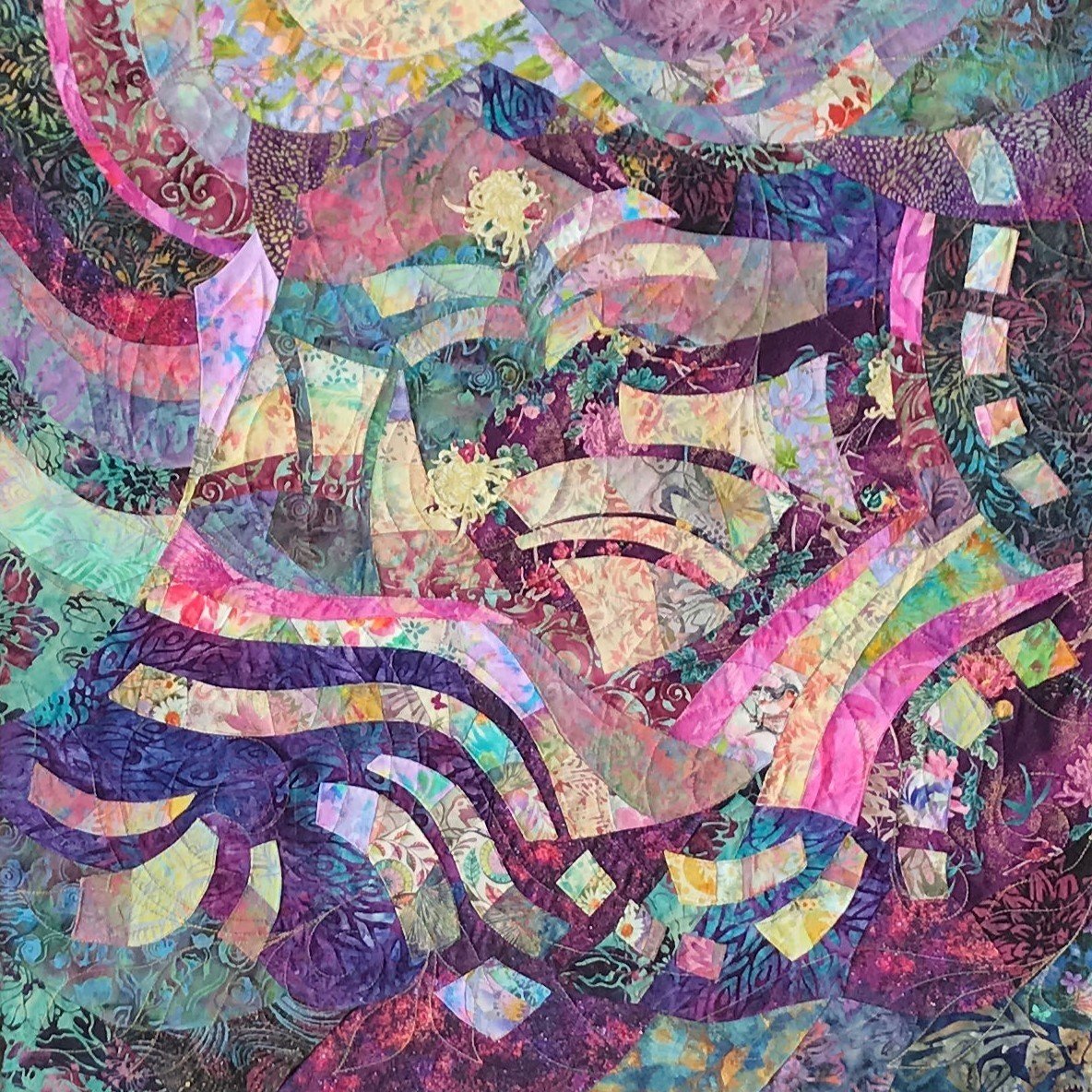by Peg Green
Thirty years ago, when I asked my local quilt shop instructors how to sew curves, they told me it couldn’t be done. So of course I had to try to figure it out for myself. Today I want to share with you the technique I invented. Apparently, lots of other quilters have had the same wish to sew curves, and they’ve tried their own experiments, so nowadays there are plenty of classes and online videos on how to piece curves. This is how I do it.
My piecing techniques work exactly the same whether you’re playing around with fabric scraps or following a precise sketch with defined shapes. I do both, but for this blog demo I’ll be doing intuitive design.
I’ll start by finding a curve in the pattern of the fabric – here, I like these 2 purple flowers, so I cut a curve to encompass them.











